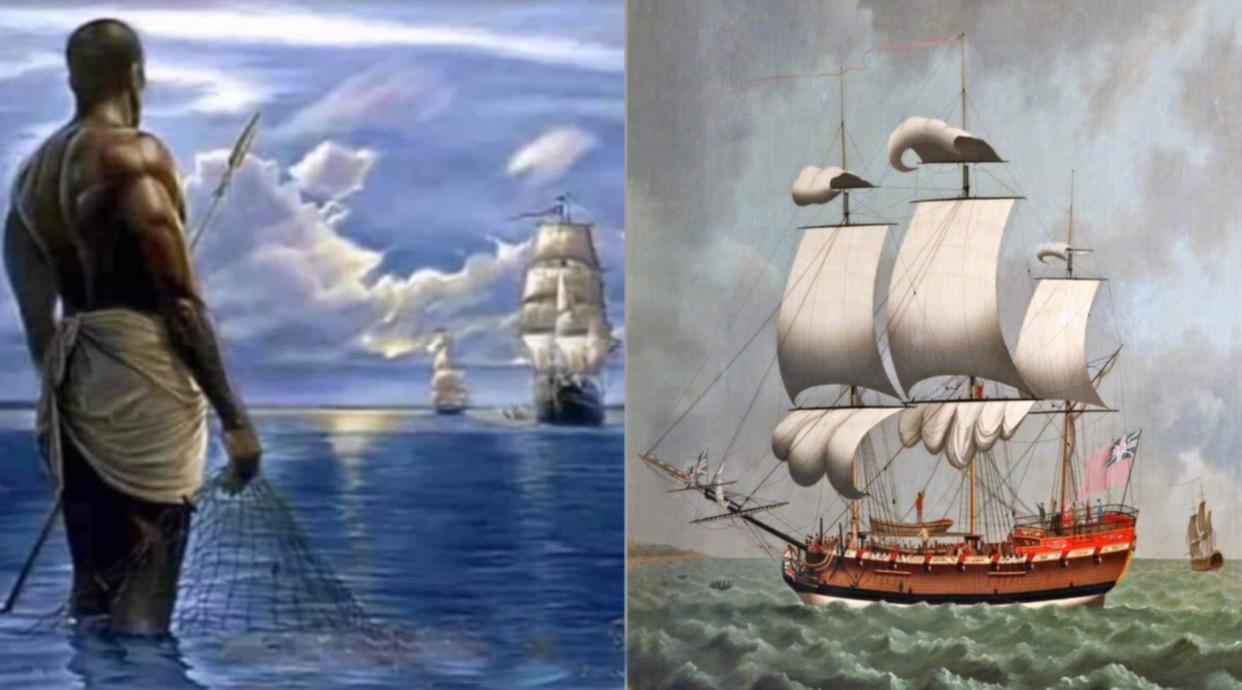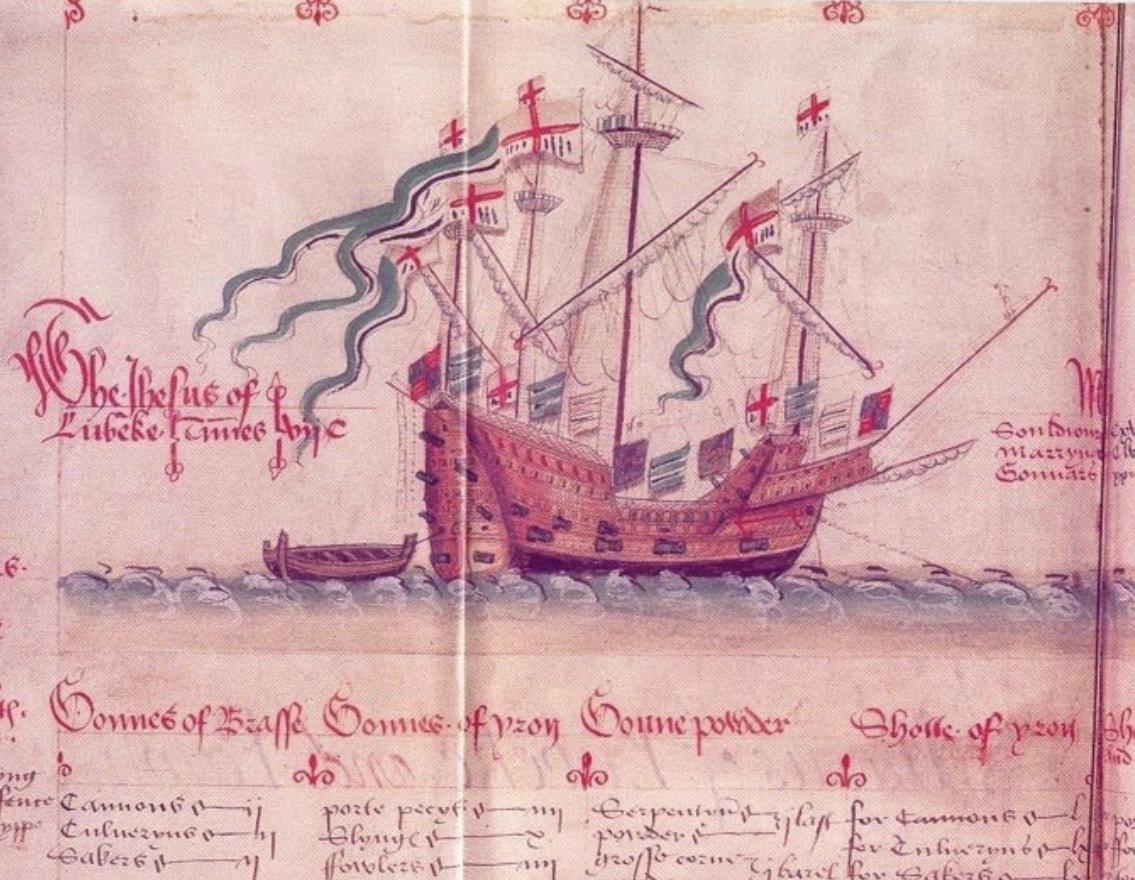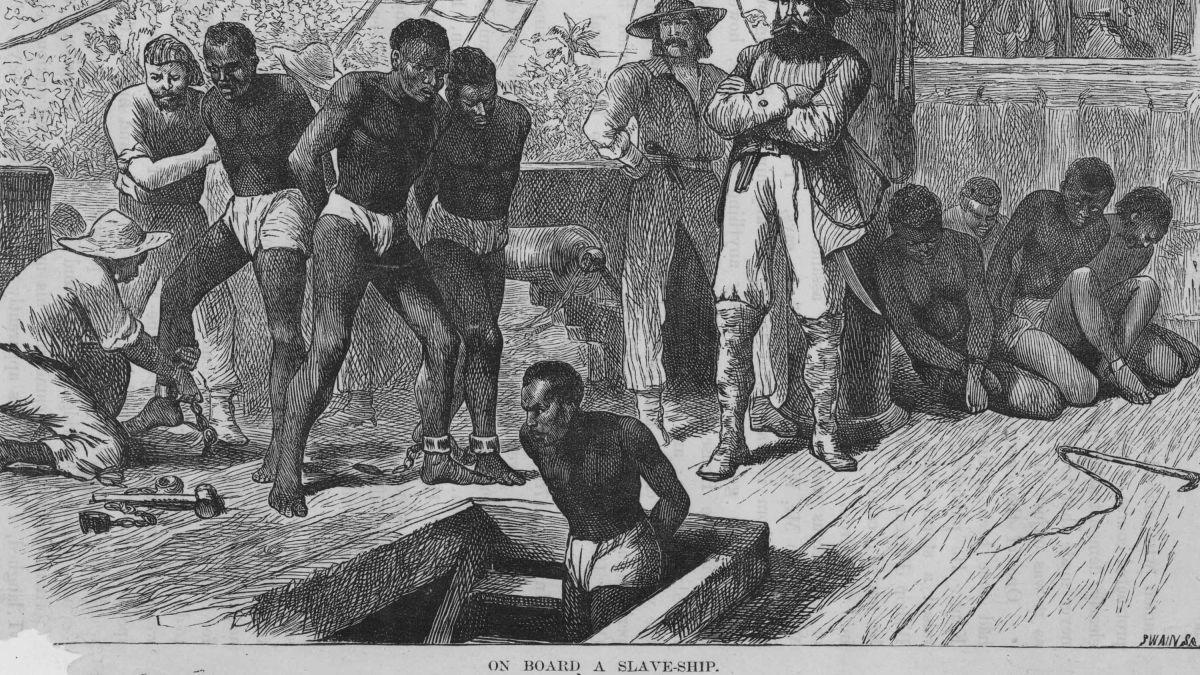On Facebook, I was banned 24 hours for stating the truth that Christianity was used as a tool to colonize Africa, enslave Africans, and murder approximately 10 million Africans in the Congo. Facebook is and has been a racist company. We must find a way to punish them.
More than 500 Years Ago, the Pope Allowed Slavery and Conquest with Inter Caetera

The Doctrine of Discovery, or Inter Caetera, established a spiritual, political, and legal justification for colonization and seizure of land not inhabited by Christians. The doctrine has been invoked since Pope Alexander issued the Papal Bull Inter Caetera in 1493.
The degreed aimed to justify explorers’ claims on land and waterways they discovered, and promote Christian domination and superiority. The doctrine applies to Africa, Asia, Australia, New Zealand, North America, and South America. If an explorer proclaims to have discovered a land in the name of a Christian European monarch, and then plants a flag in its soil, the land is then theirs. European rulers returned to occupy the land. This is how Spain and Portugal became two of the most powerful armies in the 15th and 16th century, thanks to their discoveries. You can say there are benefits to the doctrine, because it started the Age of Discoveries, and we now have America and other countries thanks to it. But it was conquest and conquering, no matter how you put it.
Background of the Inter Caetera
Christopher Columbus is one of the main reasons why the doctrine was invoked. He asked help from Portugal first, but then got his support from Queen Isabella and King Ferdinand of Spain. When Columbus arrived in Asiatic lands in the western Atlantic Ocean in 1492, he threatened the unstable relations between Portugal and Spain. Spain and Portugal initiated diplomatic discussions over the rights to possess and govern newly found lands. The result was the Inter Caetera. There were 3 bulls. Here are they:
- The first bull, recognized Spain’s claim to any discovered lands not already held by a Christian prince, and protected Portugal’s previous rights
- The second bull, granted the kings of Castile and Leon and their successors the same privileges in the newly discovered land that had been granted to kings of Portugal in the regions of Africa and Guinea
- The third bull, the Inter Caetera, dated May 4, 1493, exhorts the Spanish monarchs to spread the faith west from a line drawn, one hundred leagues towards the west and south from any of the islands commonly known as the Azores and Cape Verde
The Doctrine of Discovery
During and after the Crusades, non-Christians were considered enemies of the Catholic faith, and as such, less than human. In the bull of 1452, Pope Nicholas directed King Alfonso “to capture, vanquish, and subdue the Saracens, pagans, and other enemies of Christ” and “to put them into perpetual slavery, and take all their possessions and property”. Acting on this Papal privilege, Portugal continued to traffic in African slaves, and expanded its royal dominions by making discoveries along the western coast of Africa.

In the Inter Caetera document, Pope Alexander stated his desire that the “discovered people” be “subjugated and brought to the faith itself”. By doing this, the Christian empire would be propagated. Portugal protested the concession to Spain, so the Pope issued another document, stating that Spain must not attempt to establish its dominion over lands which were already conquered and in possession of any Christian lord. Furthermore, the pope drew a line of demarcation between the two poles, giving Spain the rights over one side of the globe, and Portugal rights over the other.
Essentially, the papal bulls of 1452 and 1493 are two examples of how the Christian powers viewed indigenous peoples as “lawful spoil and prey of civilized conquerors”. According to the “Christian Law of Nations”, Christian nations had a divine right, based on the Bible, to claim absolute title and authority over any newly discovered non-Christian territory.
Doctrine of Discovery enters the US Law
In 1823, the Doctrine of Discovery was quietly adopted into the US law by the Supreme Court in the case Johnson v. McIntosh. Writing for an unanimous court, Chief Justice John Marshal observed that Christian European nations had assumed ultimate dominion over the lands of America during the Age of Discovery, and that upon discovery, the Indians had lost their rights to complete sovereignty, as independent nations. Furthermore, he says that Indians had only retained the right of occupancy in their lands.

According to Marshall, the United Nations, upon getting independence in 1776, basically became a successor nation to the right of discovery and acquired the power of dominion from Great Britain.
With the Johnson decision, the Christian Doctrine of Discovery became the cornerstone of US Indian policy over the next century.
Revoking possible?
In the 21st century, various groups representing indigenous peoples of the Americas have tried and organized protests seeking repeal of the papal bull. They even raised petitions. They tried to remind Catholic leaders of the record of conquest, disease, and slavery in the Americas. It was all justified in the name of Christianity.
But the Doctrine of Discovery is still active. Ironically, in a country set up to maintain a strict separation of church and state, the doctrine should have long ago been declared unconstitutional. Simply put, it is based on a prejudicial treatment of Native American people because they were not Christians at the time of European arrival.
The doctrine is still being used to deny the rights of indigenous people, and to perpetuate colonization throughout the Western Hemisphere.
Jesus of Lübeck, the first slave ship to arrive in Africa in 1562

Jesus of Lübeck, the first British slave ship to arrive in Africa. The ship was chartered by Queen Elizabeth I to a group of merchants in 1563.
Jesus of Lübeck was an early 16th-century carrack built in the Free City of Lübeck. Around 1540 Henry VIII, King of England, bought the ship, which had previously been used for ceremonial purposes, to expand his fleet.
During the 1545 French invasion of the Isle of Wight the ship saw action. In an unsuccessful attempt to raise the flagship of Henry VIII, Mary Rose, she and Samson were used after she created during the Battle of the Solent.

She was later chartered by Queen Elizabeth I to a group of merchants in 1563. Jesus of Lübeck became involved in the Atlantic slave trade under John Hawkins, who organized four trips between 1562 and 1568 to West Africa and the West Indies.
300-500 Africans in the Dominican Republic were dropped as slaves by the Jesus.

Jesus encountered a Spanish fleet off San Juan de Ulúa (modern day Vera Cruz, Mexico) in September 1568 along with some other English ships on the last voyage.
Jesus was captured by Spanish forces in the resulting battle. The badly damaged vessel later was sold to a local merchant for 601 ducats.
The First British Slave Ship To Reach The Americas Was Called The Good Jesus!
Sir John Hawkins had the dubious distinction of becoming the first slave-ship captain to bring Africans to the Americas. Hawkins was a religious gentleman who insisted that his crew “serve God daily” and “love another”. His ship, ironically called “the good ship Jesus,” left the shores of his native England for Africa in October 1562. He arrived at Sierra Leone, and in a short time he had three hundred blacks in his possession. Hawkins claimed to have acquired them “partly by sword and partly by other means.”
The Good Ship Jesus | The Beginning of the British Slave Trade
What has come to be referred to as “The Good Ship Jesus” was in fact the “Jesus of Lubeck,” a 700-ton ship purchased by King Henry VIII from the Hanseatic League, a merchant alliance between the cities of Hamburg and Lubeck in Germany. Twenty years after its purchase the ship, in disrepair, was leant to Sir John Hawkins by Queen Elizabeth.
Hawkins, a cousin of Sir Francis Drake, was granted permission from Queen Elizabeth for his first voyage in 1562. He was allowed to carry Africans to the Americas “with their own free consent” and he agreed to this condition. Hawkins had a reputation for being a religious man who required his crew to “serve God daily” and to love one another. Sir Francis Drake accompanied Hawkins on this voyage and subsequent others. Drake, was himself, devoutly religious. Services were held on board twice a day.
 A bound slave adorns John Hawkins’ coat of arms. Off the coast of Africa, near Sierra Leone, Hawkins captured 300-500 slaves, mostly by plundering Portugese ships, but also through violence and subterfuge promising Africans free land and riches in the new world. He sold most of the slaves in what is now known as the Dominican Republic. He returned home with a profit and ships laden with ivory, hides, and sugar. Thus began the British slave trade.
A bound slave adorns John Hawkins’ coat of arms. Off the coast of Africa, near Sierra Leone, Hawkins captured 300-500 slaves, mostly by plundering Portugese ships, but also through violence and subterfuge promising Africans free land and riches in the new world. He sold most of the slaves in what is now known as the Dominican Republic. He returned home with a profit and ships laden with ivory, hides, and sugar. Thus began the British slave trade.
On his return to England Queen Elizabeth, livid, assailed Hawkins charging that his endeavor, “, was detestable and would call down vengeance from heaven upon the undertakers.” When Elizabeth became fully aware, however, of the profits to be made she joined in partnership with Hawkins and provided him with the “Jesus of Lubeck,” a.k.a., “The Good Ship Jesus.”
A later slaving expedition in 1567, consisting of five ships and the “Jesus of Lubeck,” met with resistance from the Spaniards at St Juan d’Ulloa in Mexico. Since the slave trade was illegal Spanish colonists usually required a charade of force from British ships, after which they would buy slaves at a discount. This time, however, the Spanish attacked the British ships and the “Jesus of Lubeck,” cumbersome and difficult to maneuver, was sunk and the crew slaughtered. Hawkins escaped with Drake on a smaller ship.
Hawkins, his piratic ambitions dashed, returned to England and remained there in the service of the Queen. He gained distinction for his pivotal role in defeating the Spanish Armada and was knighted in
1588.
(Read 2,805 times,
Southern Baptists Apologize For Slavery Stance
The Southern Baptist Convention issued an apology for its earlier stance on slavery. The issue had split the Baptist church between north and south in 1845. But a century and a half later, in 1995, Southern Baptist officials formally renounced the church's support of slavery and segregation. Richard Land, former head of the Southern Baptist Christian Life Commission, gives more information on the historic apology.
JENNIFER LUDDEN, host:
There's some additional background to this story of two Southern Baptist churches, one black and one white, merging. Slavery had split the Baptist church between North and South in 1845, but a century and a half later, in 1995, the Southern Baptist Convention issued a formal apology for its earlier support of slavery and segregation.
Here's Richard Land, a former head of the Southern Baptist Christian Life Commission, summarizing that historic shift.
Mr. RICHARD LAND (Southern Baptist Christian Life Commission): Well, it says that slavery played a role in the formation of the convention and that too often we had not acted to promote racial equality, and we apologize for that. We lament that. We grieve over that and we repent of it and we ask for the forgiveness of our African-American brothers and sisters.
LUDDEN: The plea also asked forgiveness for Southern Baptists having failed to support the civil rights movement. At the time of the apology, before a meeting of 25,000 Southern Baptist delegates, Reverend Gary Frost of Ohio delivered this response.
Reverend GARY FROST: On behalf of my black brothers and sisters, we accept your apology and we extend to you our forgiveness in the name of our lord and savior, Jesus Christ. Ephesians Chapter 4, Verses 31 and 32, say let all bitterness and wrath and anger and clamor and evil speaking be put away from you with all malice, and be kind, one to another, tender-hearted, forgiving one another, even as God, for Christ's sake, hath forgiven you.
Because of Jesus Christ our lord and savior and his great love toward us, we extend that same love, forgiveness, grace and mercy towards you. We pray that the genuineness of your repentance will be reflected in your attitudes and in your actions. We forgive you, for Christ's sake, amen.
LUDDEN: That was Reverend Gary Frost of Ohio, accepting the Southern Baptist Convention's 1995 apology for racism."


No comments:
Post a Comment